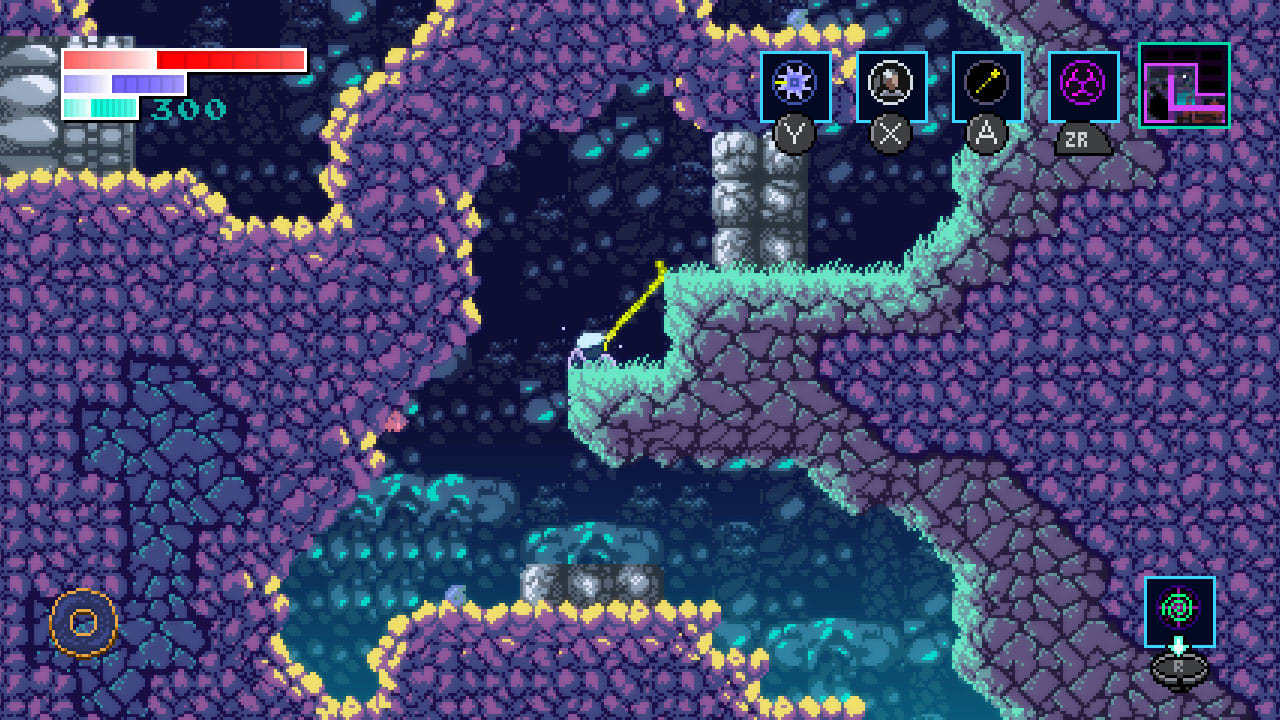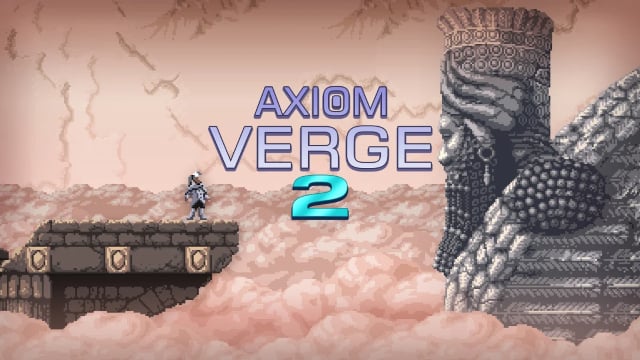Axiom Verge was an indie hit thanks to its unabashed love and devotion to Metroid. The game copied the form of Nintendo’s classic 8-bit creation and felt as if it could have been a lost gem from that bygone era.
Six years later, developer Thomas Happ is back with the sequel, and, if anything, that obsession with Metroid is even stronger in Axiom Verge 2. While there are obvious story connections to the first game, the sequel feels very nearly like its own thing. We’re given a new character, new more expansive worlds, and some distinct changes in the gameplay and mechanical focus.
Axiom Verge 2 Review: From Metroid with Love
Axiom Verge 2 (much like the original) isn’t a ‘MetroidVania‘ game so much as it’s just Metroid-like. Where Castlevania has a bit of commerce in RPG-like character and ability building, where grinding tends to serve a purpose, Metroid and Axiom Verge 2 focus on specific upgrades and exploration.
You’ll get upgrade points to enhance the stats of your character and the abilities she collects, yes, but combat itself, while plentiful, isn’t really a factor or focus in how the character evolves. If anything, the combat eventually just tends to get in the way of exploration.
Backing up a bit, though, this tale of Indra, billionaire CEO of the Globe 3 corporate giant, is all about isolation, desperation, and mystery. She’s gone to Antarctica because someone left cryptic clues that her daughter could be found there through a gateway to another world. What she finds are trapped scientists from previous missions struggling to survive and maybe get home amidst a landscape full of hostile creatures.
There’s a distinct breadcrumb-trail style to the narrative, which indulges its whole retro, pixel obsession. That mysterious contact can only communicate on ancient, 1980s-like terminals with limited memory, so every message is incomplete. This forces you to always head to the next terminal in hopes some resolve will be found. Along the way, you’ll acquire new powers thanks to strange AI ghosts (or, perhaps, old gods) called ARMS that, once discovered, give her new ways to approach the world.
The first hour of the game gives you quite a few ARMS, allowing Indra to throw a boomerang-like ranged weapon, climb better, hack machines, and even send out her consciousness into a cute little crawling drone. While the drone at first seems like just a limited gimmick for crawling into tight spaces and hopping through small portals to levels within the level, its importance branches out the farther you go.
If all this sounds intentionally vague on details, that’s because it is. It’s worth going into the game knowing as little about it as possible, even though the odds are you’ve absolutely played plenty of games like this already.
The plot is a wild, convoluted beast told largely through dialogue interactions between trapped humans and assorted alien strangers like the ARMS and other god-like beings. There’s a gorgeous ancient-Mesopotamian inspiration to the visual design (especially the enemies) that adds greatly to the strangely isolated alien feel of the world.
The superb soundtrack carries this moody atmosphere further. So while this is definitely a game designed with an 8 and 16-bit-level of presentation, it manages to do a lot with its more limited palette.

Where one player’s mileage may vary is the focus on exploration versus combat. Enemies respawn when returning to an area, but fighting them constantly doesn’t really serve much purpose. With basically just an axe as your main weapon and very little range options beyond that boomerang, there simply isn’t enough variety in the action to make killing the same monsters repeatedly worthwhile.
And it will be repeatedly given how much back and forth across the map Axiom Verge 2 makes you do. The map will show you where your next objective is, but the path to it is seldom straightforward. More often than not, you’ll be backtracking in the opposite direction to find a new path to reach the next marker. At times, the path is frustratingly obscure. There are save spots placed regularly on the world that replenish your health, but bizarrely, it’s well into the game before you can actually use these as waypoints for fast traveling.
Another retro annoyance is the game’s insistence on pressing up to interact with things like doors and save spots instead of just assigning a button for general interaction.
Axiom Verge 2 Review — The Bottom Line

Pros
- Large, fascinating world to explore
- Wonderful moody atmosphere
- Metroid-like power-up system is creative
- Constantly pushes the player onward to unlock new areas
- Excellent pixel graphics
- Superb graphic style
- Excellent score
Cons
- Not enough variety to the combat, which feels too repetitive
- Pressing up to interact is annoying
- Finding the path to your next objective can be frustratingly obtuse
Axiom Verge 2 is a proper love letter to Metroid. The vast world is challenging and exciting to explore, the power-ups provide intelligent ways to solve puzzles, and the story is involving.
It’s not perfect though, thanks to the lackluster combat and occasional bouts of frustration.
[Note: The writer purchased the copy of Axiom Verge 2 used for this review.]







Published: Aug 20, 2021 10:45 pm